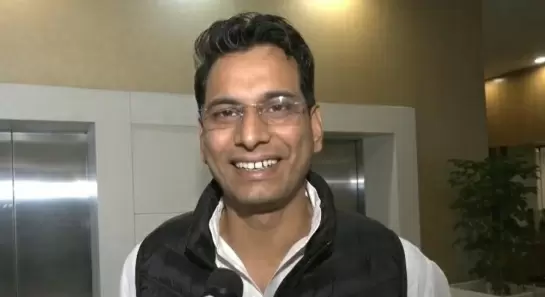IIT-Mandi developing technology to convert heat into electricity
19-August-2019
Indian Institute of Technology Mandi researchers in Himachal Pradesh are developing thermoelectric materials that can efficiently convert heat into electricity.
While solar power has received a lot of attention, other alternative sources, even if less known, are equally promising.
Generating power from heat, for example, is attractive as there is a lot of energy that is generated through human activity in industries like power plants, home appliances and automobiles, where most of this heat is lost.
A research team led by Ajay Soni, Associate Professor (Physics) with the School of Basic Sciences, IIT-Mandi, is studying materials that can convert heat into electricity.
The team has been engaged in research on thermoelectric materials and many of its papers have been published in reputed peer-review international journals, including Applied Physics Letters, Physical Review B and Journal of Alloys and Compounds.
"Thermoelectric materials work on the principle of Seebeck effect, in which electricity is generated due to temperature differences across the junction of two materials," Soni said.
A typical thermoelectric material must have the trifecta properties of high thermoelectric power and electrical conductivity, and low thermal conductivity with a capability of maintaining a temperature gradient.
This combination of properties, Soni said, is hard to come by and a few semiconducting materials must be tweaked further for good thermoelectric efficiency.
In the Western world, many automobile companies, including Volkswagen, Volvo, Ford and BMW, are developing thermoelectric waste heat recovery systems that promise three to five per cent improvement in fuel economy.
Other potential applications of thermoelectric energy harvesting include powering consumer devices and electronics, aviation, as well as space applications.
About 70 per cent of energy globally is wasted as heat and this heat is released into the environment, becoming one of the key drivers of global warming.
The trapping and conversion of waste heat into electricity can serve the dual purpose of energy self-sufficiency and environmental preservation. IANS
Red Fort Blast: NIA Sets Up Special Team Led By ADG Vijay Sakhare
Red Fort Blast Linked To JeM, AGH Module; Key Suspect Umar Killed
Umar Key Suspect In Red Fort Blast; Suicide Bombing Angle Emerges
Red Fort Car Explosion Leaves 10 Dead; Terror Angle Suspected
Car Blast Near Red Fort Metro; Multiple Vehicles Catch Fire









